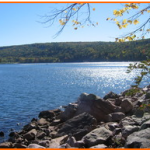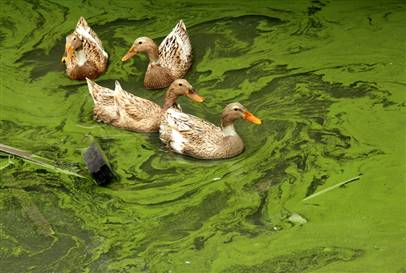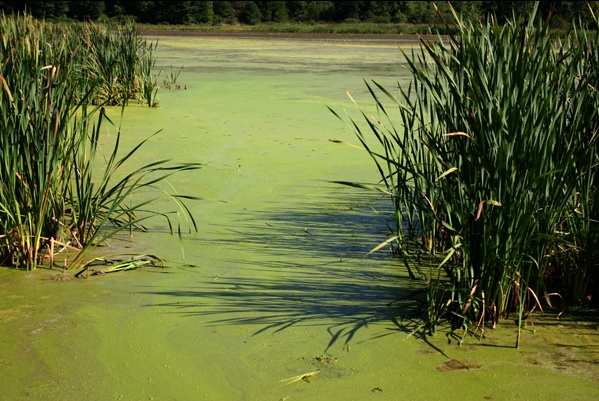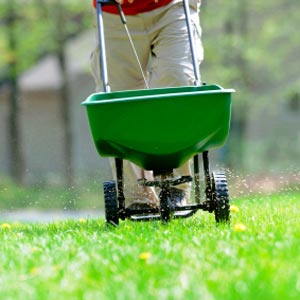 Summer time is here, and if you are anything like me, that means trips to the lake. Boating, swimming, fishing, or even just plain watching, lakes and state parks are a wonderful place to spend the weekend, so in the spirit of summer I will be explaining some of the things you might not know about your favorite summer vacation spot. Up here in Wisconsin we have ever so many lakes to choose from. These lakes come in all shapes and sizes and depths, but no matter what lake you decide to visit this summer there is one thing that they will all have in common. Algae. This article will answer the question as to why our favorite lakes can be that not-so-beautiful blue in the summer months.
Summer time is here, and if you are anything like me, that means trips to the lake. Boating, swimming, fishing, or even just plain watching, lakes and state parks are a wonderful place to spend the weekend, so in the spirit of summer I will be explaining some of the things you might not know about your favorite summer vacation spot. Up here in Wisconsin we have ever so many lakes to choose from. These lakes come in all shapes and sizes and depths, but no matter what lake you decide to visit this summer there is one thing that they will all have in common. Algae. This article will answer the question as to why our favorite lakes can be that not-so-beautiful blue in the summer months.
So, what is algae anyway?
Well, the term “Algae” refers to a broad scope of organisms. Algae can range from the microscopic single celled organisms that can be floating in a lake, to the “seaweed” that is found in the oceans, like the Giant Kelp (macrocystis pyrifera) plant. Your typical lake variety of algae is known as “Green Algae.” This term is used to describe many thousands of species of algae, but the common lake algae we are talking about here is found somewhere in this group. The type of green algae that most commonly turns your favorite lake into pea soup is the single celled variety. These tiny little micro-organisms live off of the nutrients in the lake and use the sunlight to photosynthesize, much like the plants and trees above the water. These little organisms contain large amounts of “chlorophyll.”, which is a pigment that makes all plants green. Chlorophyll is the essential pigment that allows plants to photosynthesize sunlight into food. (Photosynthesis is another story for another day). So, in your lake you have these little single celled plants floating around soaking up the sun and pulling nutrients from the water. There they sit, floating around in open water, gathering nutrients just waiting to become a tasty snack for some of the lake’s smallest inhabitants. They are at the bottom of the food chain in the lake. The next time you go swimming in the lake, you can lie still and pretend you are just a rather large and complicated bit of algae floating in the water. (Though due to our lack of chlorophyll, you might just end up with a nasty sunburn and try as you might, photosynthesis will be impossible).
How do these microscopic plants turn the entire lake green?
Now that we know what algae is, we know what is making our lakes mucky and unpleasantly green. But, this doesn’t happen year round, this phenomenon seems to happen to lakes only in the hottest parts of the summer. There is a particular reason for this, and that is because this is a common phenomenon known as an “algal bloom.”
What is an Algal bloom?
An algal bloom is when the number of algae organisms in the lake dramatically increase. Though there may be hundreds of different species of algae present in the lake, a bloom is generally made up of one or two different species of algae. These blooms occur because conditions become just right in the lake, and one species of algae begins to reproduce at an astounding rate. These algae are able to reproduce because there is an excess of nutrients found in the water. These nutrients, generally phosphorous and nitrogen, tend to collect in lakes. In the summer when there are a few good sunny days in a row, the algae have both the excess nutrients and excess sun needed to bloom in large numbers.
What does an Agal bloom do?
Aside from the green color, and general unpleasant odor of the lake, an algal bloom is nothing to be worried about. Algal blooms are a naturally occurring phenomenon, and are essential for a lake to stay healthy. This excess bloom of plant life provides tons of food for other microorganisms and fish. The algae convert the free floating nutrients into a form edible (the algae themselves) by the other residents of the lake.
Why have I heard that Algae is a bad thing for lakes?
Algal blooms are a natural thing indeed, but scientists have also observed some troubling events that they have classified as “Harmful Algal Blooms” or HAB’s for short. An HAB, simply put, is a bloom that is damaging to the ecosystem of the lake or its inhabitants. Harmful algal blooms can take on many shapes, from the thick green soup of a lake to the harmful “Red Tide” in the oceans. A red tide is an algae bloom that occurs in the ocean, it is called a red tide because of the coloration of the algae found in the oceans, which are generally brown to red.
When a lake has a particularly large algal bloom, and the water becomes very murky and green, bad things can start to happen. Algae live very short little lives, and when they die they begin to decay. This decaying process uses up the dissolved oxygen found in a lake. If the algal bloom is particularly large, the amount of decaying algae increases as well, and this can add up to something bad. You may have heard of the term “Summerkill” before, and that is something that can happen in a lake with an excessive algal bloom.
Summerkill?
Summerkill is a term used for a massive death of the fish population of a lake caused by an Algal bloom. If the number of decaying algae is large enough, the oxygen dissolved in the water can get used up, and the water will become hypoxic. (devoid of oxygen) Fish and other underwater critters use this dissolved oxygen to breathe, and if it is all used up by decaying algae… they can suffocate.
What are the causes of these Harmful Algae Blooms?
Well, HABs do occur naturally all of the time, but many scientists theorize that they are happening more and more, and it is due to human interaction. These algae blooms are caused by an excess of nutrients found in the lake, as well as the sunny summer days. While we cannot do much about the summer days, we can have a lot to do with the amount of nutrients in lakes. You would think, more nutrients are better right? Not in this case, lakes have a very delicate balance of nutrients that keep their particular residents well fed year round. Introducing excess nutrients (phosphorous and nitrogen) can disrupt this balance, and that is definitely not a good thing.
How are these excess nutrients added?
Good question. Think about that beautiful front yard you have out there. Do you use fertilizer to keep it looking nice in these hot summer months? Well, if you do, you know exactly where those excess nutrients are coming from! Those very same plant fertilizers you use on your yard are being sent through the water table and into our fine lakes. Those nutrients you are using to keep your lawn green are keeping the lakes green as well. Many scientists theorize that lawn fertilizers and other water runoff have a lot to do with the excess nutrients in the lakes. The lake kind of acts as a collecting bed for many of these nutrients and chemicals, as water flows from the ground level and collects in lakes. So, please think of where your fertilizer will end up this summer. (Excellent article about Lawn Fertilizer bans)
Finally, that other green muck what makes you sick!
Yes, you have heard about it on the news, algae can make you sick. This is true. There are some forms of green algae that can produce toxins. But most of these reports are talking about species of Blue-Green algae. This algae is actually a form of bacteria known as Cyanobacteria. Clever right? (These scientific names do make sense sometimes.) Cyanobacteria have been known to cause skin irritation, stomach flu symptoms, and many other mildly nasty things to people who are exposed. Cyanobacteria can bloom just like regular algae, so beware.. that algae you see covering the lake might make you sick. And for God’s sake, no matter how much you are tempted, don’t drink the lake water. Don’t be too afraid of going out to swim though, most State and County run parks keep a close eye on algae blooms, and will warn you of any danger.
With that said… enjoy the summer!! I know I will.
Have a question you want answered? Feel free to email me at dude@biologydude.com



